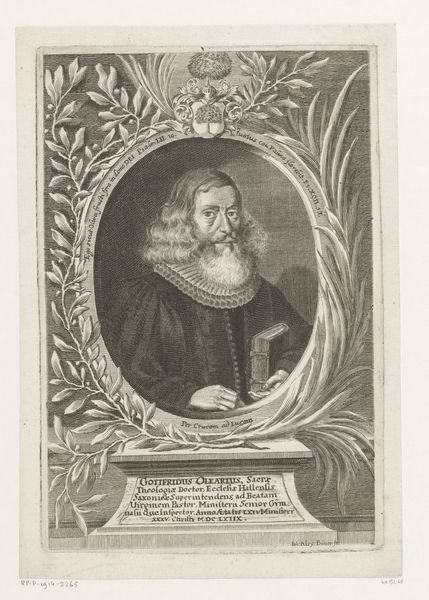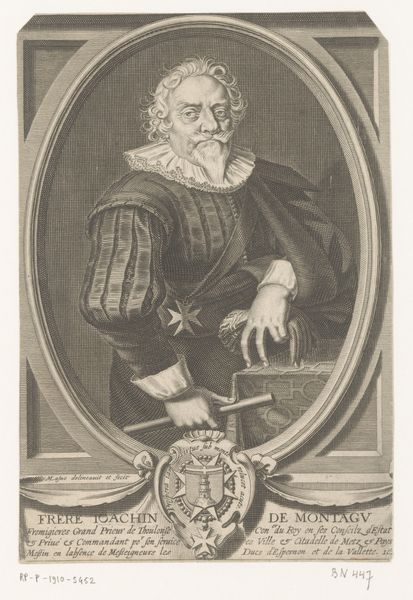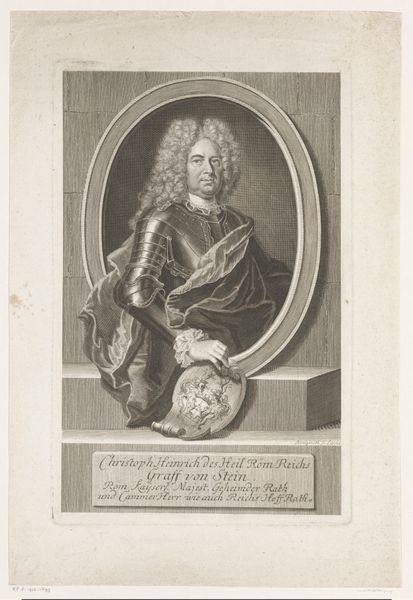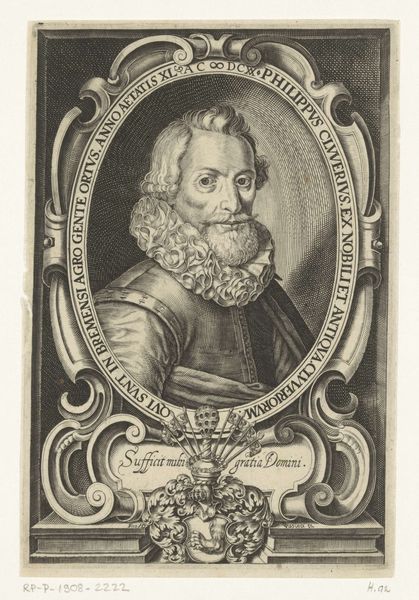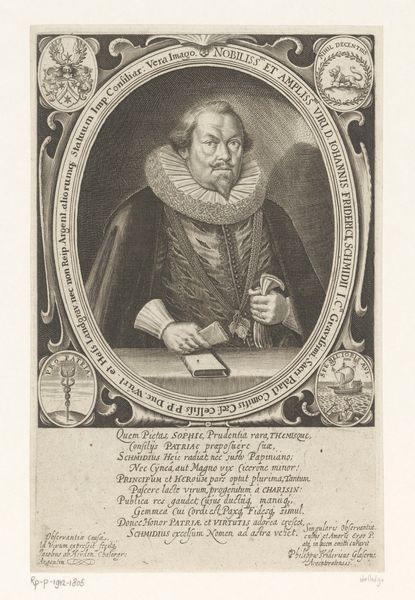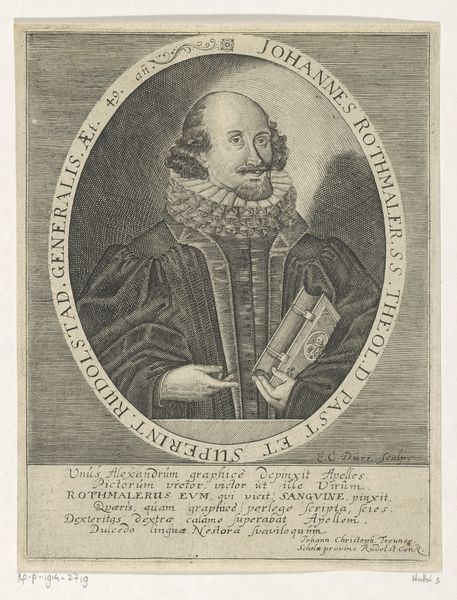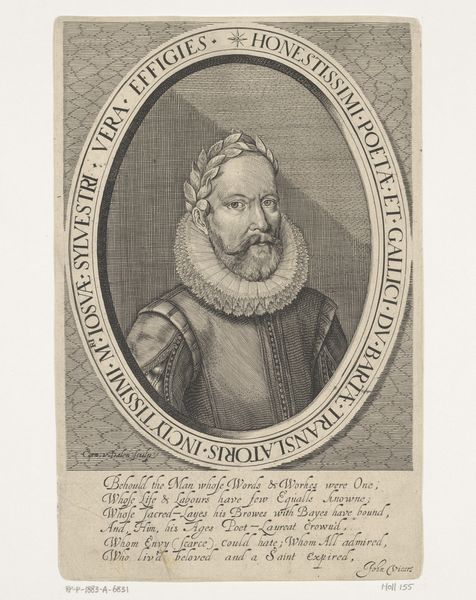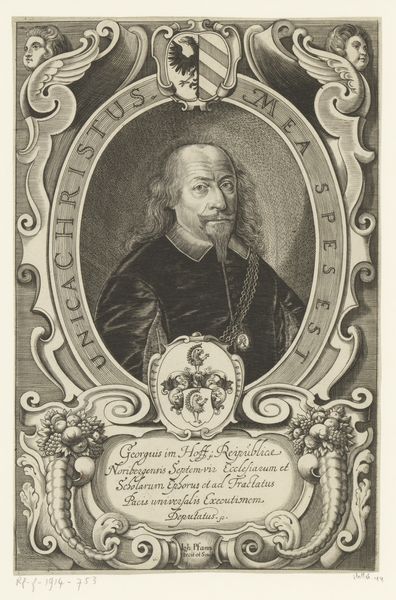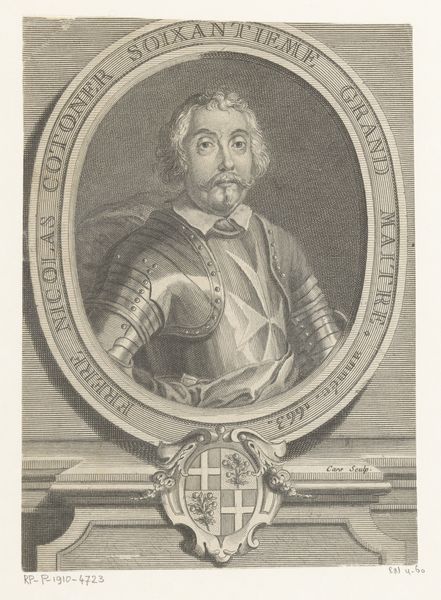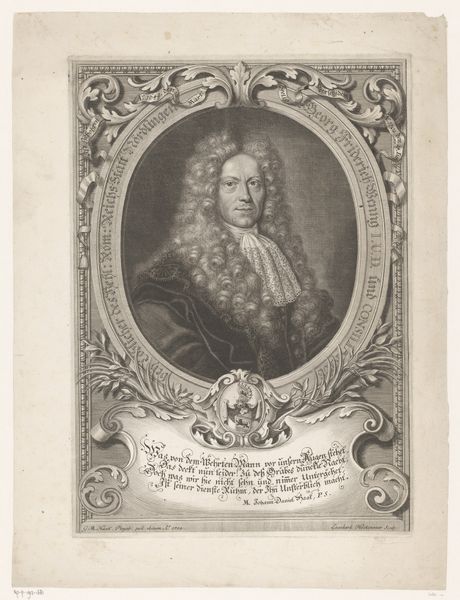
print, engraving
#
portrait
#
baroque
# print
#
old engraving style
#
figuration
#
line
#
cityscape
#
history-painting
#
academic-art
#
engraving
#
realism
Dimensions: height 166 mm, width 123 mm
Copyright: Rijks Museum: Open Domain
Curator: This is a print, an engraving actually, titled *Portret van Hendrik I van Bourbon-Condé*, created sometime between 1628 and 1670 by Pieter de (II) Jode. It's currently held here at the Rijksmuseum. What strikes you first? Editor: The figure dominates. It’s almost claustrophobic, the way he’s framed. The crisp lines and the rigid formality convey a powerful, perhaps unapproachable figure. Curator: Well, prints like these served very specific social purposes. Consider the role of portraiture in the 17th century. Before photography, engravings like this one were crucial for disseminating images of important figures, consolidating power through visual representation. Editor: Absolutely. And this is a study in controlled representation. His armor, the carefully rendered lace collar, the backdrop of classical architecture...it's all designed to project an image of authority and nobility. What’s striking, though, is the placement of the helmet. Is he surrendering or just pausing after victory? It humanizes him slightly, even questions his strength. Curator: That is a fine point. The helmet does add a layer of nuance. The conventions of Baroque portraiture emphasized both power and humanism. Jode, being a skilled printmaker, had to consider his audience—not only the elite who were accustomed to these representations, but also a broader public that was increasingly literate and engaged in political discourse. Editor: How do you think contemporary audiences engage with it today? It's intriguing to see this kind of official portrait stripped of its original context, removed from the political agendas it once served. It feels both potent and distant. Curator: It does allow for critical examination, doesn’t it? Seeing it now, removed from its direct political purpose, highlights how meticulously such images were constructed. How the subject was carefully positioned within social, and often class-based, hierarchies. Editor: Definitely. It's a valuable reminder that even what seems like a straightforward likeness is deeply mediated. It really pushes you to look closer, to understand how representation has always been a form of advocacy, consciously shaping our perception. Curator: Precisely. It brings a different perspective to our understanding of visual representation in that period. Editor: Agreed. There's always another layer waiting to be uncovered, particularly with pieces as intricate and deliberate as this one.
Comments
No comments
Be the first to comment and join the conversation on the ultimate creative platform.
